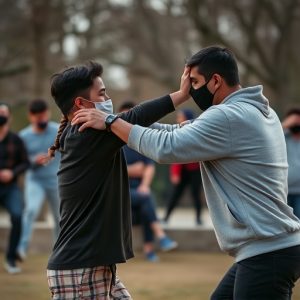Empowering College Students: Self-Defense Strategies & Secure Campuses
College safety is a multi-layered strategy focusing on physical and psychological security, with sel…….
College safety is a multi-layered strategy focusing on physical and psychological security, with self-defense for students as a core component. By integrating workshops, awareness programs, and specialized personnel, colleges empower students to protect themselves through assertiveness training, verbal de-escalation, distance creation, and alertness in public spaces. Carrying self-defense devices and participating in martial arts further enhance safety. A collaborative approach between students and authorities, encouraging open dialogue, organizing campaigns, and implementing practical security measures, ensures a culture of mutual responsibility where self-defense becomes integral to overall well-being.
Understanding College Safety: A Comprehensive Overview
College safety encompasses a broad range of measures aimed at securing the well-being of students, faculty, and staff on campus. Understanding college safety involves recognizing potential risks and implementing proactive strategies to mitigate them. This includes not only physical security, such as surveillance systems and emergency response plans, but also psychological safety, fostering an environment where individuals feel comfortable reporting incidents and seeking help.
One crucial aspect within this landscape is self-defense for college students. With the increasing prevalence of personal safety concerns, many institutions are integrating self-defense workshops, awareness programs, and even specialized security personnel into their safety protocols. By equipping students with knowledge and skills in self-defense, colleges empower them to better navigate potentially dangerous situations, enhancing their overall sense of security on campus.
Self-Defense Strategies for College Students: Empowering Yourself
Staying safe on a college campus is paramount, and empowering yourself with effective self-defense strategies is a key component. For students, learning basic self-defense techniques can boost confidence and provide valuable skills to protect themselves in unfamiliar situations. Simple yet powerful moves like assertiveness training, verbal de-escalation tactics, and knowing how to create distance from potential threats are essential tools. These skills not only help during physical altercations but also teach students to navigate potentially dangerous social scenarios.
College students can enhance their safety by practicing awareness in public spaces, always staying alert, and trusting their instincts. Carrying self-defense devices like pepper spray or personal alarms is another effective measure. Additionally, learning martial arts or joining a self-defense class offers structured training that can greatly improve one’s ability to defend themselves. By investing time in these strategies, students can take an active role in ensuring their well-being and peace of mind during their college years.
Building a Secure Environment: The Role of Campus Communities and Authorities
Creating a secure environment on college campuses is a collective effort involving both students and authorities, fostering a sense of safety that extends beyond mere physical security. Campus communities play a pivotal role in building a robust safety net for self-defense among students. Encouraging open dialogue about personal safety, organizing awareness campaigns, and promoting vigilant reporting of suspicious activities are essential steps. Students can empower themselves through education on basic self-defense techniques, enabling them to navigate potentially dangerous situations with confidence.
Authorities’ involvement is equally critical, ranging from implementing robust surveillance systems and access control measures to conducting regular security drills. They must prioritize student feedback and concerns, ensuring that safety protocols are not just theoretical but practical and adaptable. By fostering a culture of mutual responsibility, where students take proactive measures for their well-being, while authorities provide the necessary infrastructure and guidance, campuses can create an environment that prioritizes and enhances college safety.


